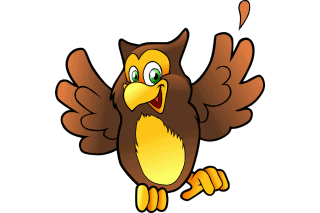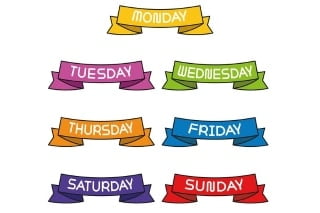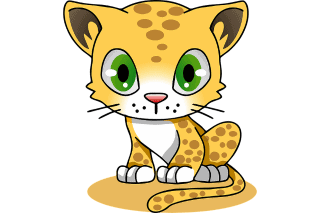

Jack and Jill Lyrics
The “Jack and Jill” nursery rhyme has its origins in 18th century England. The exact origin is uncertain, but the names Jack and Jill were commonly used to represent a boy and a girl during the 16th century. The rhyme was first recorded in 1765 and published in Mother Goose’s Melody by John Newbery. It has undergone modifications over time, with additional lyrics added.
The poem narrates the tale of Jack and Jill, two children who venture up a hill to fetch water but unfortunately stumble and injure themselves on their way down. This rhyme serves as a timeless cautionary tale, imparting to children the importance of being careful and attentive to their surroundings.
“Jack and Jill” holds significant value due to its lasting appeal and educational benefits. This rhyme not only imparts crucial lessons on caution and avoiding harm to children but also fosters a sense of connection between parents/caregivers and children through a shared cultural experience. Furthermore, it aids in the development of language and literacy skills by introducing children to new vocabulary and sentence structures.
“Jack and Jill” Lyrics
Jack and Jill went up the hill
To fetch a pail of water
Jack fell down and broke his crown
And Jill came tumbling after
Up Jack got and home did trot
As fast as he could caper
He went to bed and bound his head
With vinegar and brown paper
Jill came in and she did grin
To see his paper plaster
Her mother vexed did whip her next
For causing Jack’s disaster.
- jack and jill dirty song lyrics
- jack and jill lyrics dark meaning
- jack and jill lyrics in english
- jack and jill lyrics meaning
- jack and jill lyrics original
- jack and jill song lyrics
- jack and jill went up the hill to fetch a pail of water
- nursery rhymes jack and jill lyrics
- jack and jill cartoon
- jack and jill lyrics
- jack and jill meaning
The first verse of the rhyme sets the scene: Jack and Jill are going up a hill to fetch a pail of water. This line has become so well-known that it is often used as a metaphor for any situation in which someone is trying to accomplish a difficult task. However, things quickly take a humorous turn in the second verse when Jack falls down and “breaks his crown,” and Jill tumbles after him. The rhyme’s playful and repetitive structure helps engage young readers and listeners, as they anticipate what might happen next.
The third verse brings a sense of resolution as Jack quickly gets up and “trot[s]” back home. This demonstrates resilience and determination, encouraging children to persevere even when faced with setbacks. The mention of using vinegar and brown paper to mend Jack’s head adds a touch of whimsy and showcases creative problem-solving skills. This verse has become less popular in recent years, as it is seen as outdated and irrelevant to modern life. However, it is still an important part of the rhyme’s history and cultural significance.
Meanwhile, the fourth verse introduces a twist when Jill grins upon seeing the paper plaster on Jack’s head. However, the rhyme takes a moral turn as their mother becomes vexed and punishes Jill for her role in Jack’s accident, teaching children about responsibility and consequences.
Overall, “Jack and Jill” teaches children about the value of friendship, resilience, and the importance of being careful. The rhyme’s repetitive structure and simple language make it easily understandable and enjoyable for young readers. It has stood the test of time as a beloved nursery rhyme, captivating generations with its playful narrative and memorable verses.
American Version of “Jack and Jill” Lyrics
Jack and Jill went up the hill
To fetch a pail of water.
Jack fell down and broke his crown,
And Jill came tumbling after.
Then up got Jack and said to Jill,
As in his arms he took her,
“Brush off that dirt for you’re not hurt,
Let’s fetch that pail of water.”
So Jack and Jill went up the hill
To fetch the pail of water,
And took it home to Mother dear,
Who thanked her son and daughter.
- jack and jill lyrics
- jack and jill meaning
- jack and jill nursery rhymes
- jack and jill poem lyrics
- jack and jill rhyme lyrics
- jack and jill song
- jack and jill story
- jack and jill went up the hill lyrics
- poem jack and jill
- rhyme jack and jill
Scottish Version of “Jack and Jill” Lyrics
Jack and Jill went up the hill
To fetch a pail of water
Jack fell down and broke his crown
And Jill came tumbling after
Ye’ll mend his head, and I’ll mend his heels,
And dance wi’ him again.
And mak’ him as weel as e’er he was,
D’ye think that that’ll be wrang?
Then Jack got up and hame did run,
As fast as he could caper;
To see if his mither would tak’ him in,
Nor lat the wee laddie drap’er.
Jill came in and she did grin,
And said, “I’ve lost my tether,
But I’ll be maister o’ my ain ainsell,
If I gang and fetch anither.”
“Jack and Jill” holds significant educational value for children. The rhyme effectively imparts lessons on the importance of caution and attentiveness, highlighting the consequences of carelessness. Furthermore, the rhyme promotes physical activity and exercise through its depiction of climbing and tumbling. The enduring popularity of “Jack and Jill” can be attributed to its simple yet memorable lesson, easily understood and remembered by children. It remains an integral part of children’s cultural heritage and a valuable educational resource for parents, caregivers, and educators alike.
Frequently asked questions (FAQ's) based on “Jack and Jill”
Answer: Jack and Jill are going up the hill to fetch a pail of water.
Answer: Jack and Jill both fall down and “came tumbling after”.
Answer: Jack’s head is injured and Jill’s forehead is bruised.
Answer: Jill’s mother uses vinegar and brown paper to mend her head.
Answer: The rhyme teaches children to be careful and pay attention to their surroundings, as accidents can happen if they are not careful.
Answer: Parents and caregivers can encourage children to act out the movements of going up the hill and tumbling down, which can help teach children about the importance of physical activity and exercise.
Answer: “Jack and Jill” has been passed down from generation to generation and is a beloved part of children’s cultural heritage. The rhyme teaches important lessons about safety and responsibility, and it has endured for centuries because of its simple, memorable message.
- jack and jill dirty song lyrics
- jack and jill lyrics dark meaning
- jack and jill lyrics in english
- jack and jill lyrics meaning
- jack and jill lyrics original
- jack and jill song lyrics
- jack and jill went up the hill to fetch a pail of water
- nursery rhymes jack and jill lyrics
- jack and jill lyrics
Some more details based on "Jack and Jill"
“Jack and Jill” is a beloved nursery rhyme that has been cherished by generations of children. It recounts the tale of two youngsters who venture up a hill with the intention of fetching water, only to stumble and sustain injuries during their descent. This timeless rhyme is thought to have originated in 18th century England and has been embraced worldwide, with various adaptations and translations in multiple languages.
One theory suggests that the rhyme is based on the story of King Louis XVI of France and his queen, Marie Antoinette. According to this theory, the “Jack” in the rhyme is a reference to King Louis, while the “Jill” represents his queen. The “hill” that they go up is thought to be a reference to the guillotine, which was used to execute the royal couple during the French Revolution.
Another theory suggests that the rhyme has pagan origins and is a reference to fertility rituals that were practiced in pre-Christian times. In this interpretation, the “Jack” and “Jill” represent male and female fertility, while the pail of water symbolizes the need for water to nurture crops and promote growth.
Regardless of its origins, “Jack and Jill” has endured as a beloved children’s rhyme for centuries. The rhyme is often used to teach children about the importance of being careful and paying attention to their surroundings, as well as the consequences of being careless. It can also be used to teach children about the importance of physical activity and exercise, as it involves the movements of going up a hill and tumbling down.
In addition to its educational values, “Jack and Jill” has also had a significant impact on popular culture. The rhyme has been referenced in many different forms of media, including books, movies, and music. It has also been parodied and adapted into various different versions, including “Jack and Jill Went Up the Hill to Smoke,” which is a humorous take on the original rhyme.
Overall, “Jack and Jill” is a beloved nursery rhyme that has played an important role in children’s literature and cultural heritage. Its enduring popularity is a testament to its simple, memorable message and the lasting impact it has had on generations of children.
- jack and jill cartoon
- jack and jill lyrics
- jack and jill meaning
- jack and jill nursery rhymes
- jack and jill poem lyrics
- jack and jill rhyme lyrics
- jack and jill song
- jack and jill story
- jack and jill went up the hill lyrics
- poem jack and jill
- rhyme jack and jill
Some activities for children's based on "Jack and Jill"
We have curated a list of engaging activities that will not only bring the rhyme to life but also provide valuable learning opportunities for children. Through these activities, children can enhance their creativity, social skills, and cognitive development while having a great time. Let’s dive in and discover the magic of “Jack and Jill” together!
- Dramatic Play: In dramatic play, children can act out the story of “Jack and Jill” using their imagination and creativity. They can create a pretend play area with a hill and a water pail, taking turns playing the roles of Jack and Jill. Through this activity, children can bring the rhyme to life and develop their storytelling skills.
Note: Dramatic play allows children to express themselves, enhance their communication skills, and develop empathy as they step into the shoes of different characters. It fosters imagination, social interaction, and cognitive development through role-playing and storytelling.
- Water Play: Water play involves providing children with opportunities to explore and interact with water. Set up a water station with containers, cups, and a small water pump. Children can engage in pouring, scooping, and transferring water, stimulating their senses and promoting fine motor skills.
Note: Water play offers a sensory experience that enhances children’s cognitive, social, and physical development. It helps develop hand-eye coordination, spatial awareness, and problem-solving skills. It also provides a calming and enjoyable experience for children while promoting their understanding of basic scientific concepts.
- Obstacle Course: Create a mini obstacle course that includes a small hill or incline. Children can navigate through the course, mimicking Jack and Jill’s journey. They can climb up the hill, navigate through tunnels or obstacles, and complete the course, promoting physical activity and coordination.
Note: Obstacle courses encourage physical movement, coordination, and gross motor skills development. They provide opportunities for children to challenge themselves, build resilience, and develop problem-solving abilities. Obstacle courses also promote balance, spatial awareness, and overall fitness.
- Story Sequencing: In story sequencing, children arrange pictures representing key events from the rhyme “Jack and Jill” in the correct order. They can use printed or drawn pictures of Jack and Jill going up the hill, their fall, and their return home. This activity enhances children’s sequencing skills and storytelling abilities.
Note: Story sequencing helps children develop logical thinking, sequencing skills, and understanding of narrative structure. It promotes critical thinking and comprehension as children organize the events in the correct order. This activity also encourages creativity and language development as children narrate the story based on the picture sequence.
- jack and jill lyrics in english
- jack and jill lyrics meaning
- jack and jill lyrics original
- jack and jill went up the hill to fetch a pail of water
- nursery rhymes jack and jill lyrics
- jack and jill lyrics
- jack and jill meaning
- jack and jill nursery rhymes
- jack and jill poem lyrics
- jack and jill rhyme lyrics
- jack and jill story
- jack and jill went up the hill lyrics
Related links
Categories
Other popular rhymes
Other related keywords and search's
- jack and jill dirty song lyrics
- jack and jill lyrics dark meaning
- jack and jill lyrics in english
- jack and jill lyrics meaning
- jack and jill lyrics original
- jack and jill song lyrics
- jack and jill went up the hill to fetch a pail of water
- nursery rhymes jack and jill lyrics
- jack and jill cartoon
- jack and jill lyrics
- jack and jill meaning
- jack and jill nursery rhymes
- jack and jill poem lyrics
- jack and jill rhyme lyrics
- jack and jill song
- jack and jill story
- jack and jill went up the hill lyrics
- poem jack and jill
- rhyme jack and jill






























